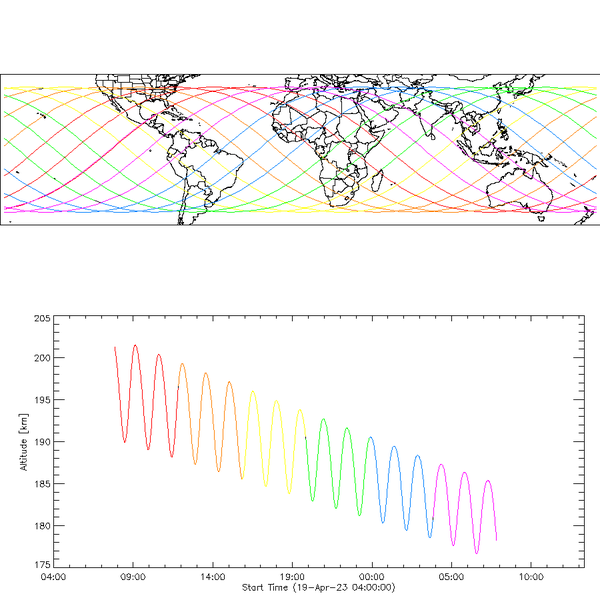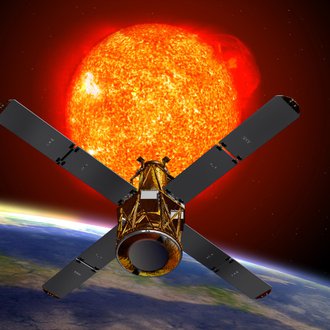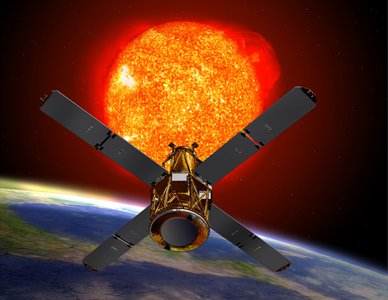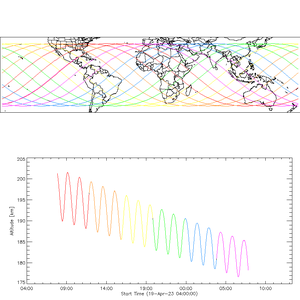After 21 years of exploring the Sun, RHESSI now finally returns to Earth
For nearly two decades the AIP has been participating in the NASA mission RHESSI. The spaceraft made 16 years of solar X-ray and gamma-ray observations in its low-Earth orbit before the mission ended in 2018 due to loss of communications. Although the spacecraft has continued to orbit the Earth since then, it is expected to finally re-enter the atmosphere and burn up on the night of 20 April.
Observers who are at least as far south as San Francisco may, with luck, be able to catch a glimpse of RHESSI as it burns up, while some parts of the 660-pound observatory – notably the tungsten grids – may even survive re-entry. Luckily, according to NASA the risk of harm coming to anyone on Earth is low – approximately 1 in 2,467.

The top image shows RHESSI's orbit on 19 April, with the orbit's altitude below. The 90-minute orbital period and the steady descent are visible. At the beginning of the mission, the altitude was 600 km.
Credit: Pascal Saint-Hilaire and Hugh HudsonDuring its mission, RHESSI data provided important insights into solar flares and associated coronal mass ejections. These events release the energy equivalent of billions of megatons of TNT in the solar atmosphere within minutes and can have impacts on Earth, including disrupting electrical systems. The mission also provided data from more than 100,000 X-ray events, which scientists used to study energetic particles in solar flares. RHESSI documented solar flares ranging from tiny nanoflares to huge superflares.
Further information
NASA press release
https://www.nasa.gov/feature/nasa-retired-solar-energy-imager-spacecraft-to-reenter-atmosphere/
RHESSI's re-entry
https://sprg.ssl.berkeley.edu/~tohban/wiki/index.php/RHESSI%27s_Re-entry
Images
The top image shows RHESSI's orbit on 19 April, with the orbit's altitude below. The 90-minute orbital period and the steady descent are visible. At the beginning of the mission, the altitude was 600 km.





